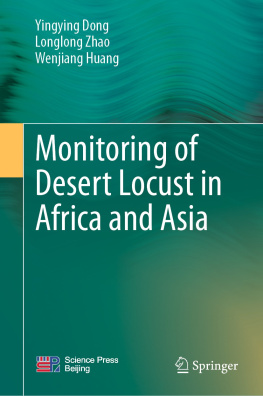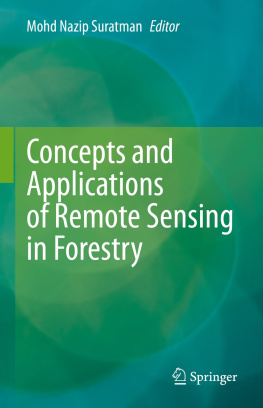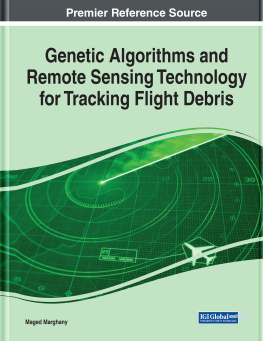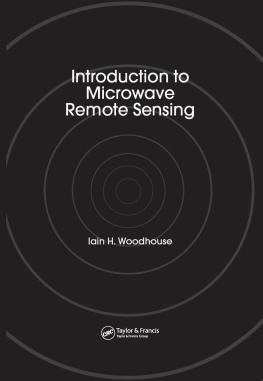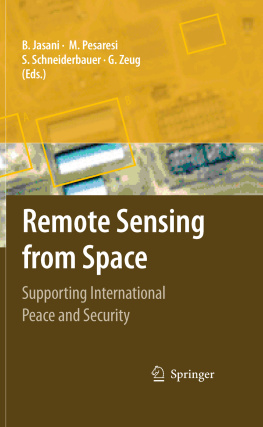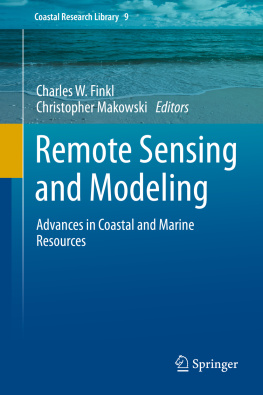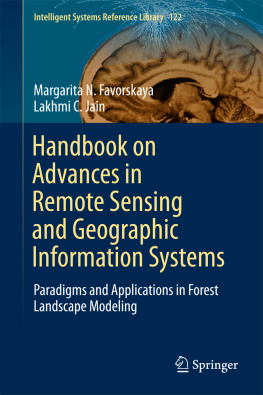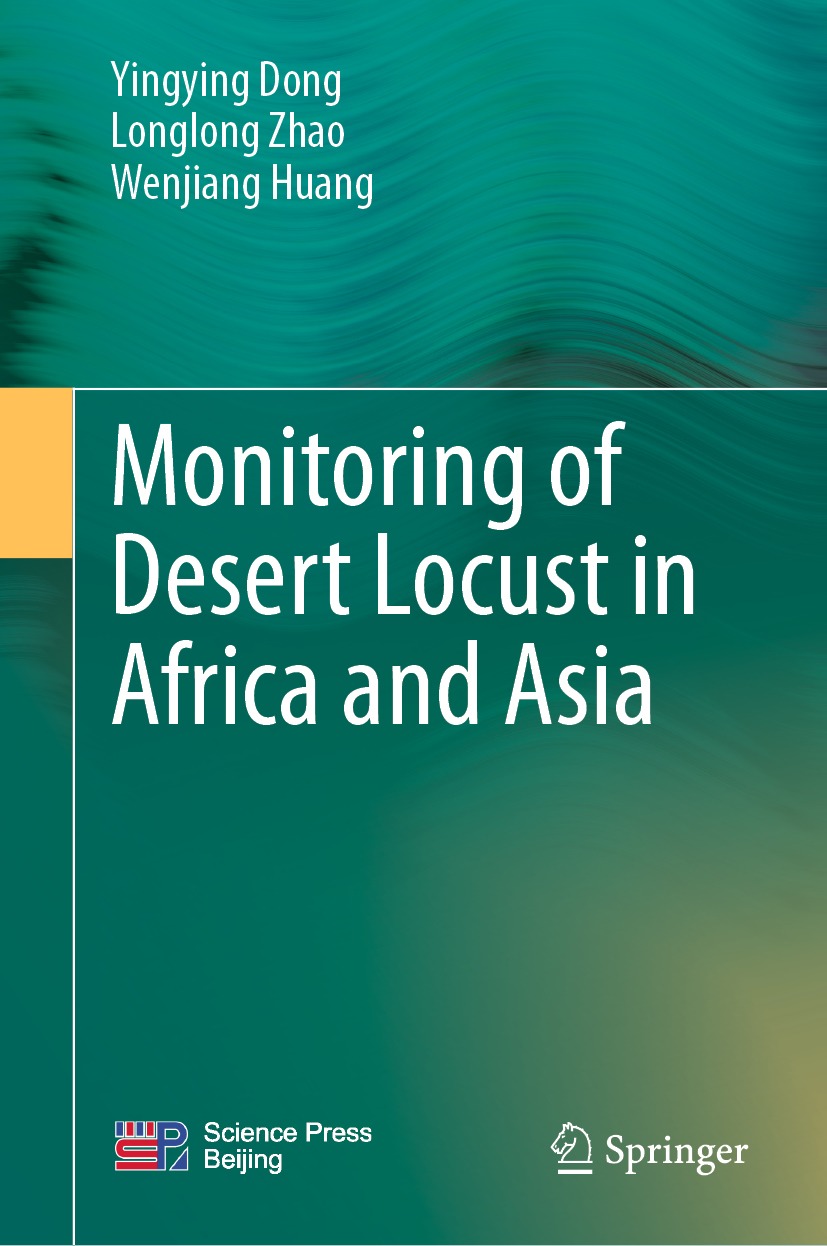Yingying Dong
Aerospace Information Research Institute, Chinese Academy of Sciences, Beijing, China
Longlong Zhao
Shenzhen Institute of Advanced Technology, Chinese Academy of Sciences, Shenzhen, Guangdong, China
Wenjiang Huang
Aerospace Information Research Institute, Chinese Academy of Sciences, Beijing, China
ISBN 978-981-19-7237-9 e-ISBN 978-981-19-7238-6
https://doi.org/10.1007/978-981-19-7238-6
Jointly published with Science Press
The print edition is not for sale in China (Mainland). Customers from China (Mainland) please order the print book from: Science Press.
Science Press 2023
This work is subject to copyright. All rights are solely and exclusively licensed by the Publisher, whether the whole or part of the material is concerned, specifically the rights of reprinting, reuse of illustrations, recitation, broadcasting, reproduction on microfilms or in any other physical way, and transmission or information storage and retrieval, electronic adaptation, computer software, or by similar or dissimilar methodology now known or hereafter developed.
The use of general descriptive names, registered names, trademarks, service marks, etc. in this publication does not imply, even in the absence of a specific statement, that such names are exempt from the relevant protective laws and regulations and therefore free for general use.
The publishers, the authors, and the editors are safe to assume that the advice and information in this book are believed to be true and accurate at the date of publication. Neither the publishers nor the authors or the editors give a warranty, expressed or implied, with respect to the material contained herein or for any errors or omissions that may have been made. The publishers remain neutral with regard to jurisdictional claims in published maps and institutional affiliations.
This Springer imprint is published by the registered company Springer Nature Singapore Pte Ltd.
The registered company address is: 152 Beach Road, #21-01/04 Gateway East, Singapore 189721, Singapore
Foreword
Food is the foundation of human survival, and food security is the cornerstone of global sustainable development and social stability. Food production and its safety are eternal topics throughout human society. With the continuous development of science and technology, human beings have always maintained ethnic continuity through adaptive changes to the food production security system at all stages of history. In recent years, global climate change has intensified. Disasters such as droughts, floods, earthquakes, crop diseases, and pests are increasingly raging. In particular, the outbreak and accelerated migration and the spread of major global pests have put countries in the world under the threat of food security shortage. Using the latest scientific and technological achievements to improve and innovate the food production security system is the mission of Chinese researchers and a considerable challenge for approximately 7.6 billion people in the world coping with famine.
In the food production security system, the monitoring, prevention, early warning, and control of diseases and pests are crucial. In the field of plant protection, traditional pest monitoring methods based on the ground point sampling and weather-driven trend of early warning mode can no longer meet the needs for efficient, accurate, and green prevention and control of pests. It is urgent to promote the scientific innovation and technological development of pest forecasting, prevention, and management and effectively promote the system reform in response to the new situation of global changes. In the context of interdisciplinarity, diseases and pests forecasting urgently needs the help of remote sensing technology to provide continuous spatial-temporal information monitoring methods and spatial-temporal linkage information processing mode. Firstly, promote the innovative development of the spatial-temporal monitoring and early warning model of diseases and pests by organically combining diseases and pests biology with remote sensing science; secondly, make full use of the advantages of remote sensing in the expansion and extension of temporal and spatial scales, and combine prevention and control needs to build a bridge from scientific research results to practical applications to help promote and implement green prevention and control; finally, establish pest monitoring and early warning spatial information service platforms, joint international and domestic major institutions and government functional departments to prevent and control diseases and pests, provide scientific and technological service support to ensure agricultural production, and realize new theories, methods, and technologies for pest control and disease prevention under the background of global changes.
The desert locust is the most destructive and major migratory pest in the world. In this book, the research team studied desert locusts breeding area quantitative extraction, migration path dynamic analysis, and damage monitoring technology, established a desert locust spatial information system, and produced pest monitoring application products. It can provide important scientific and technological support for ensuring global food security, ecological security and maintaining regional stability. Dr. Yingying Dong, from the Aerospace Information Research Institute, Chinese Academy of Sciences, Beijing, China, is an outstanding young innovative talent in the field of remote sensing monitoring and forecasting of vegetation pests and diseases. She has made a series of research achievements in data processing, monitoring, early warning modeling, intelligent system development, promotion, application, etc. This book analyzes the occurrence characteristics of desert locusts and the current status of monitoring and early warning research, taking the scientific research and practical applications carried out by the research team in the field of desert locust monitoring as examples, and comprehensively expounds on the methods and key technologies of remote sensing monitoring of desert locusts. This book innovatively combines fundamental theories and cutting-edge technologies to provide data, methods, and technical support for desert locust control. It is currently a vital reference material that is rarely seen in the field of spatial information technology applications and plant protection research and teaching.
In the era of big data, the rapid development of remote sensing technology has effectively promoted scientific research and its application. We hope the publication of this book will benefit remote sensing workers, scientific researchers, and extension individuals related to pest control. We hope this book could arouse colleagues, especially young scholars, to further explore remote sensing monitoring of pest. I sincerely hope the authors can bravely climb the peak of science, make more excellent progress in this field, and make new contributions to the promotion of remote sensing science.

